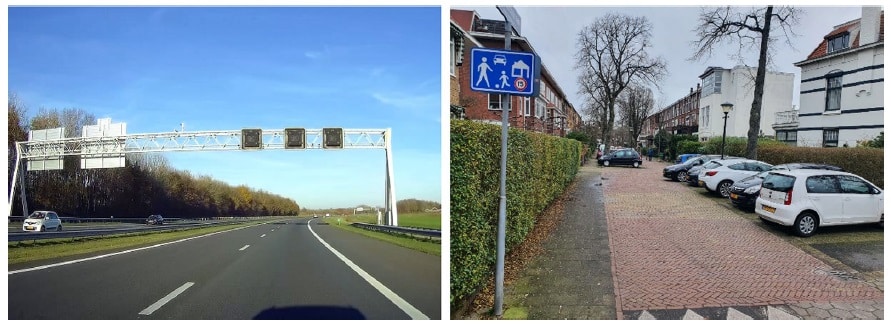
Have you ever heard of a self-explaining road?
Why don’t we explain what a self-explaining road is:
Theeuwes and Godthelp published a paper in 1995 called “Self-explaining roads” with the overall notion that roads should be easily understood by the road user, in short, a road environment should elicit safe road behaviour simply through its design.
This notion is heavily used today and governs how roads should be designed, which helps in reducing confusion in the road environment and significantly lowers the risk of an accident.
Here are a couple examples of self-explaining roads from the following paper below:
- A typical freeway environment, with smooth asphalt, wide lanes and guard rails, indicating to road users that this is a high-speed environment.
- A shared space environment, with street furniture, landscaping and changed surface treatments.
If you would like to find out how self-explaining roads affect human behaviour, check out the full research paper by Theeuwes on the subject:
https://cognitiveresearchjournal.springeropen.com/articles/10.1186/s41235-021-00281-6
Reference: Theeuwes, J. Self-explaining roads: What does visual cognition tell us about designing safer roads?. Cogn. Research 6, 15 (2021). https://doi.org/10.1186/s41235-021-00281-6
